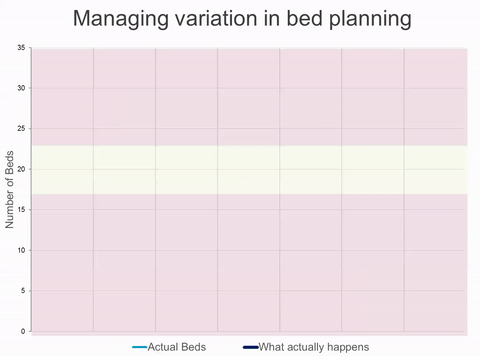Variation in Bed Planning
Variability in arrivals and lengths of stay and ensuring that patients are able to access the right inpatient unit for their condition add to the complexity of managing beds, all factors that simulation can help manage.
Too often we look at an average number of beds per specialty. Demand for beds from both elective and emergency patients, together with patient discharge delays creates pressure on hospital beds that builds over the course of the day. On average, it looks like there are enough beds, but the reality is that patients are often placed in a non-ideal unit if the right bed in the right unit is not available at peak demand, or they may have to wait in ER until the bed becomes available.
